Bali
Just the name conjures up blissful days, beaches and boards; Bali maybe a bucket list destination for most, but for surfers, it is a treasure trove of world-class surf spots!
No matter if you're on an old hand or a shaky legged learner; Bali is the ideal place to hunt down some dreamy barrels or simply get to grips with the sport. Either way- it’s an ideal spot no matter your surfing level.
Whether you like reef breaks, sandy peaks or just watching the pros in awe, Bali has got you covered with everything from heaving waves to friendly beach breaks.
In this guide we explain when to go, how to get there, where to get the best waves and a whole lot more! If it’s your first surf trip we’ve got some top packing tips and essential rules to travelling with boards so you don’t find yourself all at sea!
If that's not enough, we've also highlighted six of the most popular beaches in Bali so you know how to get the most out of them.
But hey, it's ok, maybe menacing sets just aren't your scene? If you're looking for a holiday to suit the best of both worlds - sand, surf, sun and fun, then Bali is just the ticket! So what are you waiting for....it's time to get on board!
When to go?
Bali doesn't really have an offseason. Sitting just south of the equator, visitors are drawn to beautiful Bali all-year-round due to its perfect waves, warm water, offshore winds, and tropical climate.

Daylight hours: 12 hours
Sun set: Around 6:30 p.m daily
Average temperature: 27ºC to 32ºC
Humidity: 75%
Even though Bali is warm all year round, there are two very distinctive seasons; dry and wet. Whether you're a surf junkie or an excited explorer, these seasons may inform your travel dates. May, June and July are generally considered to be the best time to travel to Bali in terms of the weather. However, if surfing's on the agenda your preferred dates may differ
When to surf?
The dry winter season runs from May to September which is when the famous waves of Uluwatu, Padang Padang and Impossibles break at their best due to the South-East trade winds. The wet summer season from December to March usually translates to fewer crowds and smaller waves. On the other hand, the east coast waves, on Keramas beach for instance, really come into play at this time of year.
Beat the crowds
Due to its popularity, the surf is Bali can get somewhat crowded leading to a frustrating slushy session for any surfer, irrespective of skill. A good time to beat the crowds is from October through to April. If you're on holiday with your partner - he/she loves to surf, and you prefer to chill out with a good book, this may be the ideal time of year to get away for some crowd-free R&R.
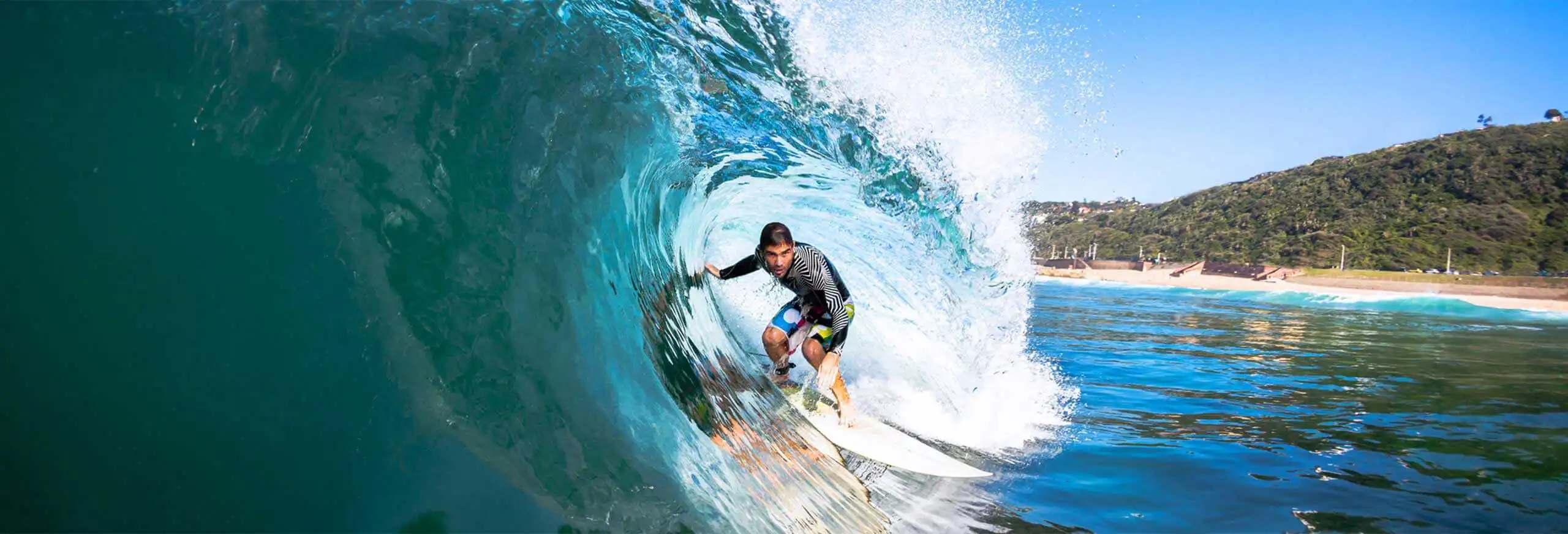
Travelling to and around Bali
Whether you're getting to Bali by train, boat or plane a few insider tips can help you to the island of the gods trouble-free. Local transport is also worth researching; from dodgy taxis to precarious motorbike services, you'll need to keep your wits about you getting around this small island. Keep reading for some top safety travel tips for Bali.
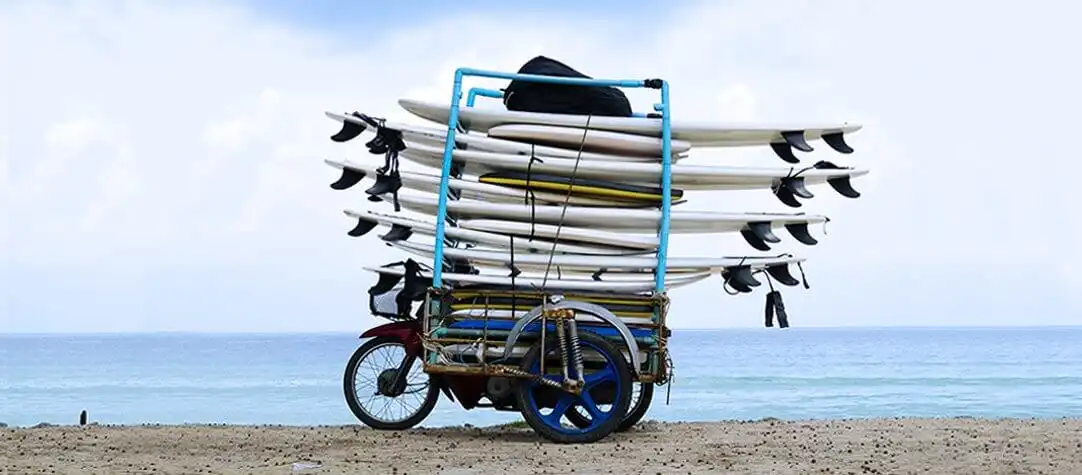
Air and sea
Bali's popularity has made this little island very accessible from all around the globe. It means you're spoilt for choice when it comes to getting to the island by air or sea.
By plane: Jakarta, the national capital, is the main gateway airport into Indonesia, however, there are many direct international flights to Bali's Ngurah Rai Airport, located just south of Kuta. Many airlines offer non-stop flights into Bali from Perth, Melbourne, Sydney, Hong Kong, Bangkok, Brunei, and more. If you're travelling on a budget, or you're ready to splash some cash, there are a multitude of airlines with daily flight schedules to Denpasar.
By boat: If you're living it up in one of Bali's surrounding islands then it may be preferable to arrive in Bali by boat. There are a few ferry options to Bali depending on your departure point... but don't hold your hopes out for luxury travel, many services could do with a fresh lick of paint and a good scrub down. But if you're not too picky you can rely on ferries to get you from A to B "relatively" safely.
Ferries from Lombok run 24 hours a day and can take around 4 to 5 hours to arrive depending on tides and currents. Remember, you're on island time now! PELNI ferries from the Ketapang Port in Java also depart daily to Gilimanuk port in Bali. It's only a short 30-40 minute sail, but in peak season you may have to wait in a queue. If you are heading to Bali from Gill island a fast boat might be the best option. Although pricier than a regular ferry, you'll be rewarded with a luggage compartment, spacious seating and even a toilet (how's that for luxury!) Pack your rain jacket as you may be in for a wet and wild ride!
Getting around
Be prepared to take a chill-pill when getting around Bali, the traffic moves at snail pace. As a guide, it's likely to take one to two hours to drive the 14km between Nusa Dua and Kuta.
Ojek: The quickest way to get around towns is by motorcycle taxis- otherwise known as an 'ojek' (similar to tuk tuk transportation in Thailand). You can easily flag these down and haggle the price down. But getting on a motorbike without a helmet obviously comes with its fair share of thrills and spills.
Bemo: It's common practice to hire a vehicle with a driver for the entire day in Bali. Your Bemo will take you wherever you want to go and either wait for you or arrange a pickup time for later. Bemo's are a handy option for groups travelling from beach-to-beach with their boards.
Taxi: Metered taxis (as opposed to casual pickup services) are another good way to get around without having to haggle the price down. Make sure you go with a legitimate Blue Bird Taxi though (look out for signature blue cars with a bluebird on the side). Many drivers try to claim they are Blue Birds, but they are in fact not.
Bike: Thrill seekers can opt to get themselves around on hire motorbikes or mopeds...But this is not for the faint-hearted. Riotous traffic and careless drivers are rife in Bali, and some consider riding on Balinese streets to be a

Balian- Bali's best-kept secret
Type: Reef break
Tide: All tides
Swell: South-West
Wind: North-East
Best for: All skill sets
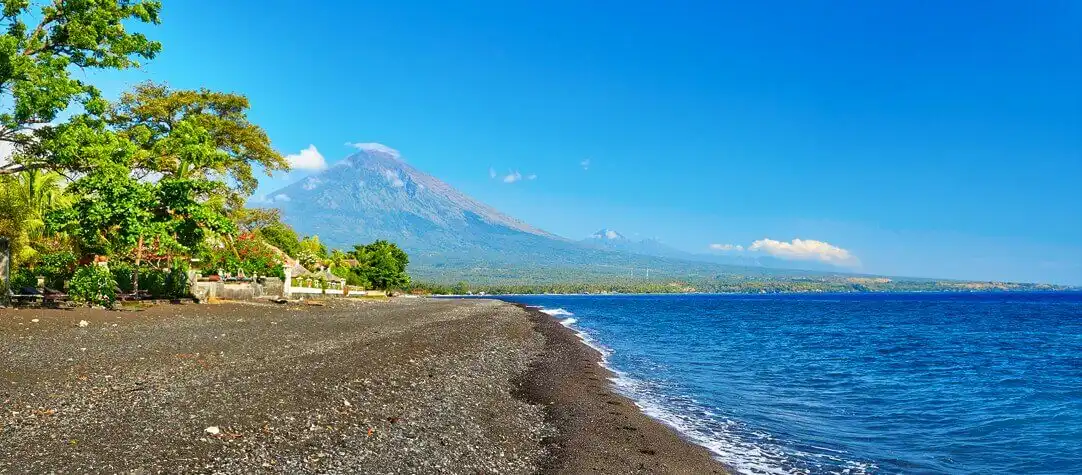
Balian (“sacred” in the local lingo) is the perfect place to unwind and enjoy the waves for a few days. Just an hour's drive from Kuta on the South West coast, Balian's unspoilt coastlines makes for a calming retreat from chaotic Kuta and crowded Seminyak. Perfect for those looking to get off the grid (even on a tranquil paradise like Bali) Balian's surf will suit all skill levels. Just be sure to time your trip well as conditions will differ depending on the time of year.
The early bird surf is best in Balian as it tends to get pretty blustery later in the day. Perfect for longboards, Balian's left-handers (waves breaking from left to right) are longer and better shaped than its rights, but you should beware of currents when you first enter the water. Once you're in, paddle out about 50 meters to the left for long gnarly rides back to shore.
As with many of the beaches along this side of the Balinese coast, Balian is a black sand beach and not necessarily the nicest spot for a swim. However, there are plenty of great vantage points perfect for spending a lazy afternoon.
Not too far away is Kutuh Beach, a tricky spot to get to but well worth a visit too. Accessible only through an enormous quarry-like ravine; the payoff is that you'll most likely have the place to yourself. And be sure to check out the nearby Soka beach too. Be sure to stick around till dusk where thousands of bats emerge from a hidden cave situated above a Balinese temple. It's a rare attractions you won't want to miss!
Unbelievable Uluwatu
Type: Reef break
Tide: All tides
Swell: South West, West 2-12ft
Wind: South, South East, East
Best for: Intermediates & advanced
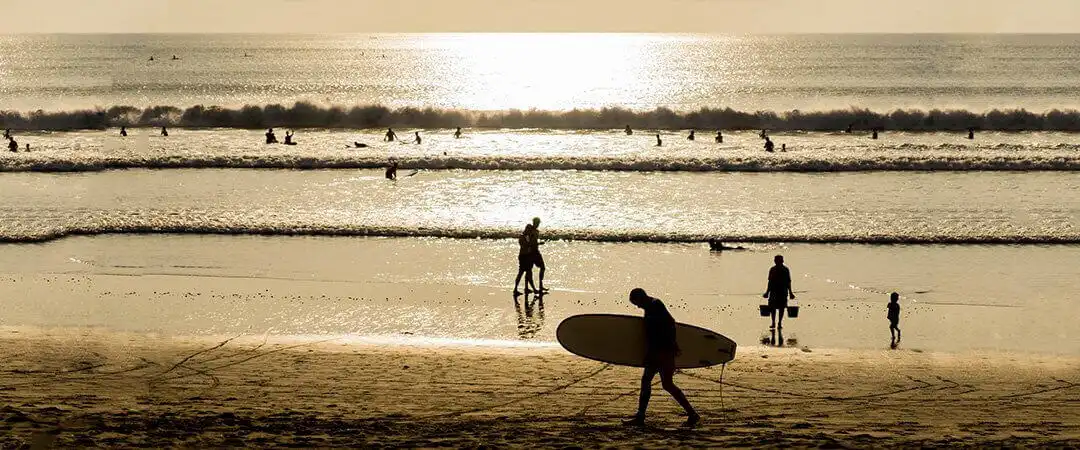
Uluwatu is one of the most iconic coastal spots in Bali, and for good reason. Depending on the tide, different sections of the reef can offer up dredging left-hand barrels and some very exciting rides.
Thankfully there are a number of peaks you can take off from, which is helpful because the place absolutely packs out with tourists at the slightest hint of swell. Even the walk down to the water’s edge is worth the trip. You’ll have to navigate a number of tourist-packed bars, and spiral down hell’s own staircase to get down to the water’s edge. Don’t let the scenery fool you though, Uluwatu is a serious wave, especially at its peak size. Even on high tide, wiping out on a bigger one will most likely result in you getting scrubbed across the reef. Always remember; if in doubt, don’t go out.
Safety Tip: At mid and low tide, you’ll have to walk a decent distance across coral reefs to get into the surf. Wear booties to avoid reef cuts and if you do get injured, make sure to come straight in and scrub the coral out with some lime or disinfectant. The warm water speeds up bacteria growth, meaning nasty infections are easy to come by.
Limitless Legian (Also known as double six)
Type: Beach break
Tide: All tides
Swell: South, South West 1-6ft
Wind: North East
Best for: Beginners
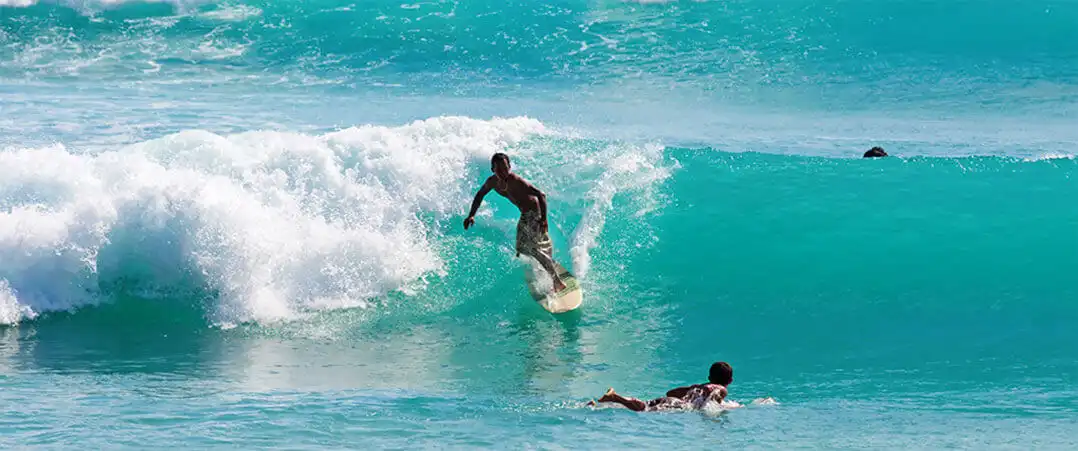
Legian (also known as Double Six) makes up part of the long stretch of Seminyak Beach. It's a learner’s dream, with a variety of surf schools to choose from and endless deck chairs and umbrellas to curl up under and enjoy the view. You can even partake in a spot of fishing if you so fancy!
Double Six is a fairly mushy beach break, great for longboards, fish riders or if you’re just starting out. The shifting sandbanks offer both lefts and rights, and there is always plenty of room to test out your skills (although the best banks will always have a few locals sitting on them). You’ll be lucky to find any barrels here, although Legian does offer longer rides than your typical beach break.
Safety Tip: The sun is the biggest danger here so be sure to get under some shade particularly during the hottest parts of the day. Remember to zinc up, bring plenty of water with you and wear a long sleeve rashie if you have one. They’re not the most fashionable thing in the world, but neither is heat stroke!
Powerful Padang Padang
Type: Reef break
Tide: All tides
Swell: South-West
Wind: South-East
Best for: Advanced
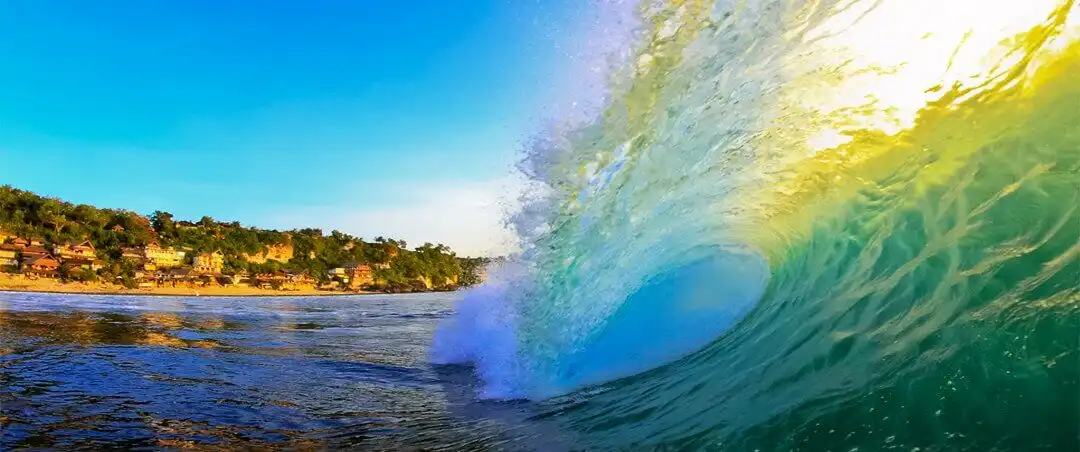
Padang Padang, so good they named it twice. Also known as the Balinese pipeline, it's a wave only for the best of the best!
The fast long barrelling wave certainly lives up to its reputation. Breaking over a shallow coral reef. Padang barrels right from the take-off, so you can expect a racetrack all the way to the inside section, which can get extremely hollow on a low tide.
Padang can be ridden in conditions up to 10ft, but anywhere near this, you'll need nerves of steel to even consider paddling out. This spot is certainly not one for the faint-hearted...you have been warned! Perhaps you prefer to just watch the pros? The Rip Curl Cup takes place annually in Padang Padang and is not an event to be missed.
Safety tip: Be careful when duck-diving, especially on low tide, as it is very easy to ding your board on the reef.
Chaotic Kuta
Type: Reef break
Tide: All tides
Swell: South, South West
Wind: South, South East, East
Best for: All surfers
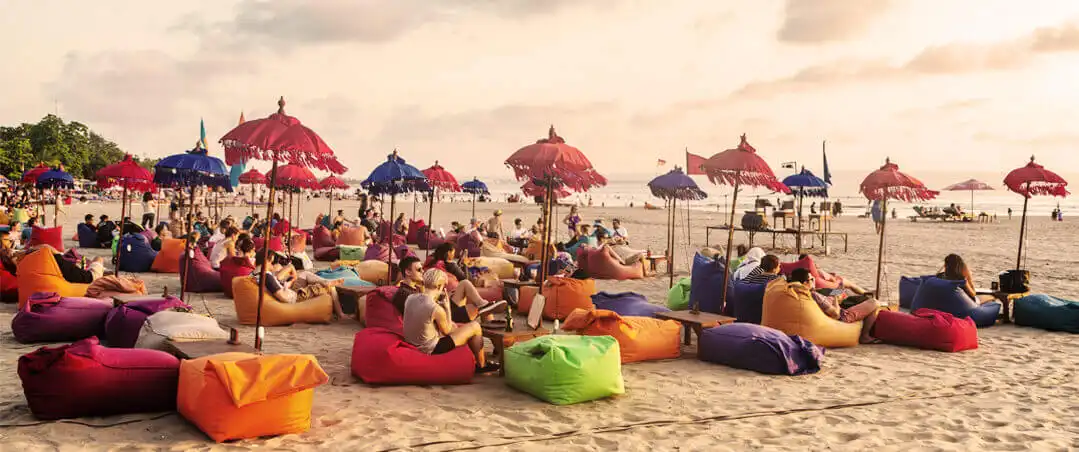
New to surfing? Then Kuta is a great place to start! Bali has many famous surf spots for beginners, but none are as popular for surf, sand, a great night out on the town as Kuta. In fact, many of Bali’s south-west beaches provide safe sandy breaks ideal to practise on without doing too much damage to yourself.
The drawback with Kuta is that due to its popularity it can get very busy in the water - sometimes up to 60 surfers at a time can be found competing for waves. However, due to the varying skill levels of surfer in Kuta you can be sure to sneak a few every so often.
New to the sport? There are a heap of surf schools right on the beach, so whether you need a quick refresh or you're a total novice, check yourself in for some island-style lessons. The best waves in Kuta are usually during the dry season, from April to August with prevailing offshore winds.
And if surfing isn't your thing, kick back and relax at any number of the beach bars along this long stretch of beach.
Secret Serangan
Type: Reef break
Tide: Mid tide
Swell: South 3-8 ft
Wind: West, South West
Best for: Intermediate to advanced
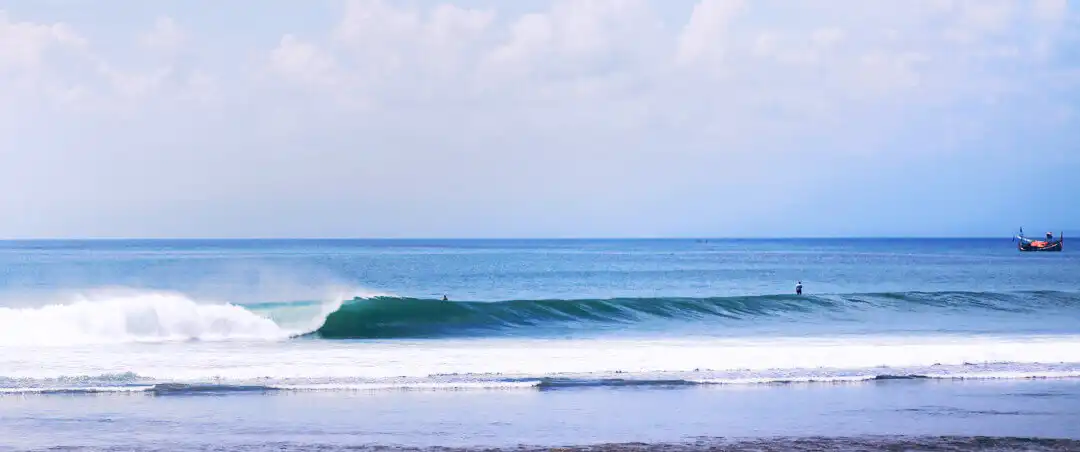
Previously a secret spot, Serangan is quickly becoming one of Bali’s most popular waves. You’ll have to drive down about 15 minutes’ worth of unsealed road, hold your nose passed a rubbish tip and pay a toll just to get to the place, but don’t worry...the waves make up for it!
The paddle out can look daunting, however near the break wall, and towards the south end there are gaps in the reef you can scarper through.
The wave itself is beyond fun, and can offer rip-able walls, ramp sections and the occasional barrel, sometimes all on the one ride. In front of the break wall you’ll be able to scratch into both lefts and rights, and further north there is a consistent left, however be prepared to battle a strong sweep outside the shelter of the wall.
Safety tip: If you’re newer to the sport, sign up for a lesson or rent a longboard and sit on the south end (to your right as you face the beach). It’s much mellower than the main break.
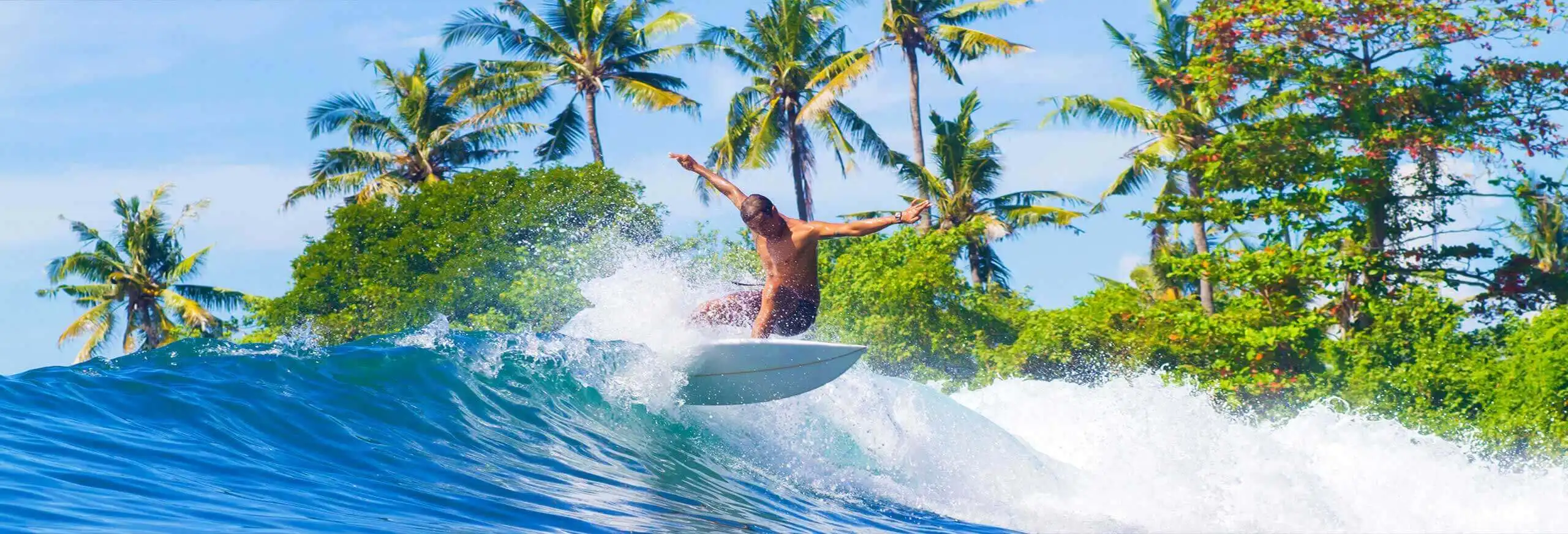
Surf Specifics Packing Checklist
It's not as easy to pick up spare surf equipment in Bali as it is at home. So make sure you pack the following items for your trip ...
- Wax (use tropical water wax when surfing in Bali)
- Spare leg strap
- Leg rope leash strings
- Spare fin keys
- Boots for beginners - especially if it's your first time surfing over reefs
- Wax comb
- Ding repair kit
- First aid kit including pain killers, plasters, hydration tablets etc
- Bathers, bikini, board-shorts
- Beach towel
- Energy snacks
- Money belt and/or credit cards
- Cash/coins for beach lockers
- Helmet for beginners
- Rash vest or old t-shirts to surf in
- Zinc and/or regular sun-cream over SPF 30
- Sun hat
- Sunglasses
- Thongs or flipflops
- Snorkel mask for when you're not catching waves
- Insect repellent
- Beach umbrella or shade
- Water bottle
- Travel insurance to cover you for an array of sticky scenarios!
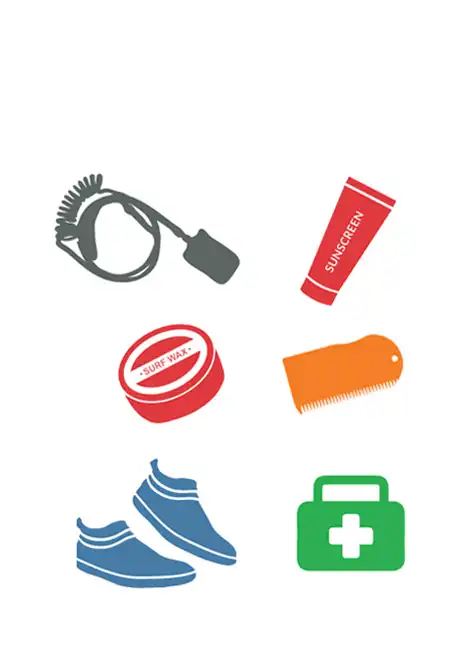
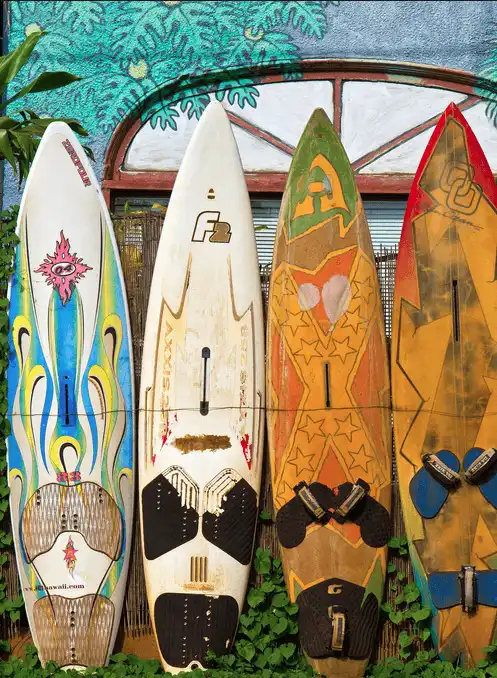
Travelling With Boards
This is all about preparation and a little know-how. Picking your board up at baggage collection to find a big crease in your favourite thruster can certainly ruin a trip. Especially seeing as your shaper will be miles away!
A little preparation and TLC for your board can go a loooong way:
- Most airlines class surfboards as sports luggage. So make sure you book these in before getting to the airport, or you’ll be charged an arm and a leg to get them on the plane.
- Invest in a good board bag. For about $100 you can get surfboard bags which are perfect for travelling with. A decent bag will protect your boards whether you're heading overseas or just strapping it down on the top of the car for your next surf trip.
- If you are fitting two boards in a bag - make sure you separate them from each other inside your quiver (bag). You can use old t-shirts but a cotton board bag is better.
- Prep your boards for flight. Before you leave home, leave your board in direct sunlight for 15 minutes, and scrape off all the old wax with an old debit/credit card. Otherwise, you'll be left with a messy melted waxy bag at the other end.
- Take your fins out of your board for the flight and then place the screws back in the holes. They are too easy to lose if left loose. It's still a good idea to keep your fins in the same bag as your board.....After all, you can’t use one without the other!
The Low-Down On All Things Bali!
Want a bit more action with your trip? Don’t limit yourself to just surfing, Bali attracts visitors far and wide for a reason. Whether you're after the jungle (and monkeys) of Ubud, the Tanah Lot temple or Potato Head beach bar, you're sure to find an experience to entertain everyone in your group. So what are you waiting for? Find your perfect wave, make new friends, chill back and simply enjoy island beach life by the bucket load. If you're up for an epic surf sesh, some sensational nightlife or a spiritual yoga retreat, a trip to Bali is a no-brainer!
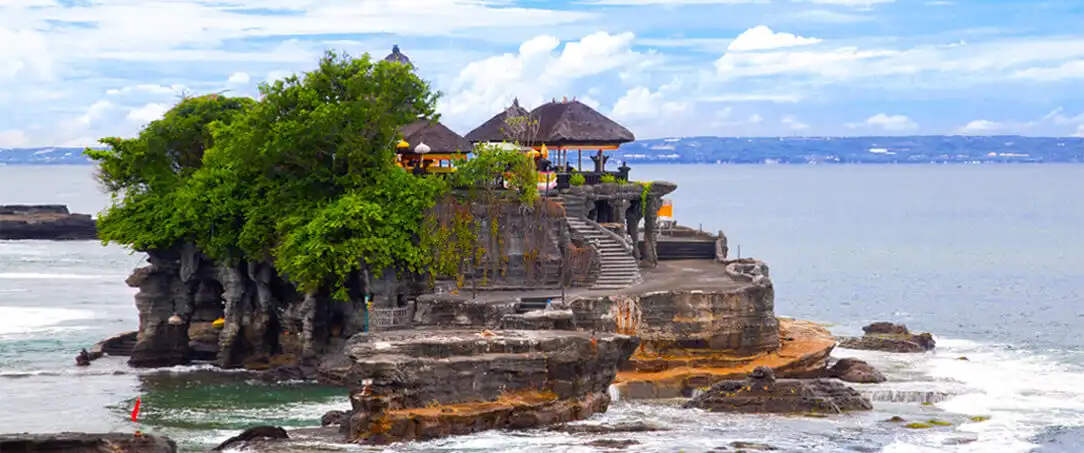
Currency: Rupiah | Capital: Jakarta | Country code: +62-36
Plug: Type C European 2-pin, Type F Schuko plug, Type G British 3-pin
Emergency numbers: main 112, police 110, fire 113, ambulance 118
Language: Bahasa Indonesia (official, modified form of Malay), English, Dutch, local dialects, Javanese
Australian embassy: Jl. Tantular No.32, Renon, Denpasar Tim., Kota Denpasar, Bali, Indonesia
Surf specifics: For up to date info on surf reports and forecasts check out the following sites: swellnet.com,magicseaweed.com, surfline.com, surf-forecast.com.
Beach safety: Whether you're in Bali or Australia, it's vital to follow signs to be safe at the beach. Our beach safety guide has you covered!
Travel insurance: No matter if you're a pupil or a pro, accidents can happen to anyone including you! You can’t predict when a natural catastrophe might take effect, or when injury means you require emergency medical care costing an arm and a leg. Be prepared for the unexpected with travel insurance for your trip. Use Comparetravelinsurance.com.au to compare policies for your surf holiday today.

Natalie Smith
Having travelled to over 40 countries, studied tourism management and worked as a flight attendant for over three years, Natalie knows more than a thing or two about travel! She’s an adventure-lover, whose favourite trips have been trekking Machu Picchu and volunteering in an animal shelter in the Amazon. Qualified in Tier 2 General Insurance General Advice and specialising in travel insurance for the last five years, she in passionate about helping travellers get the most out of their holiday.








